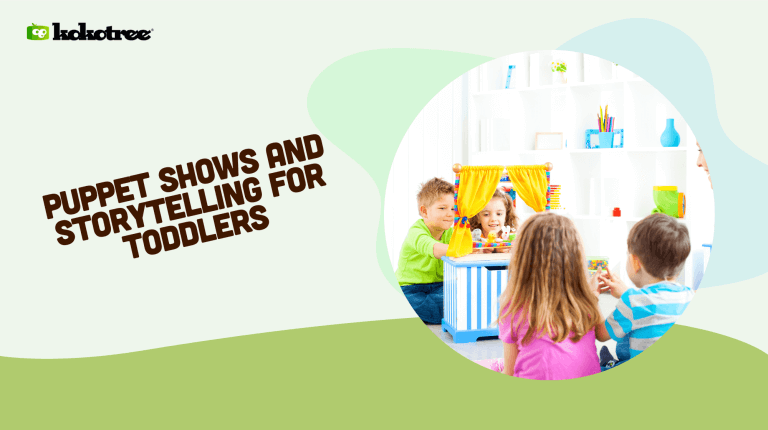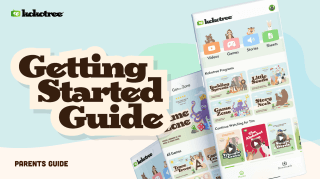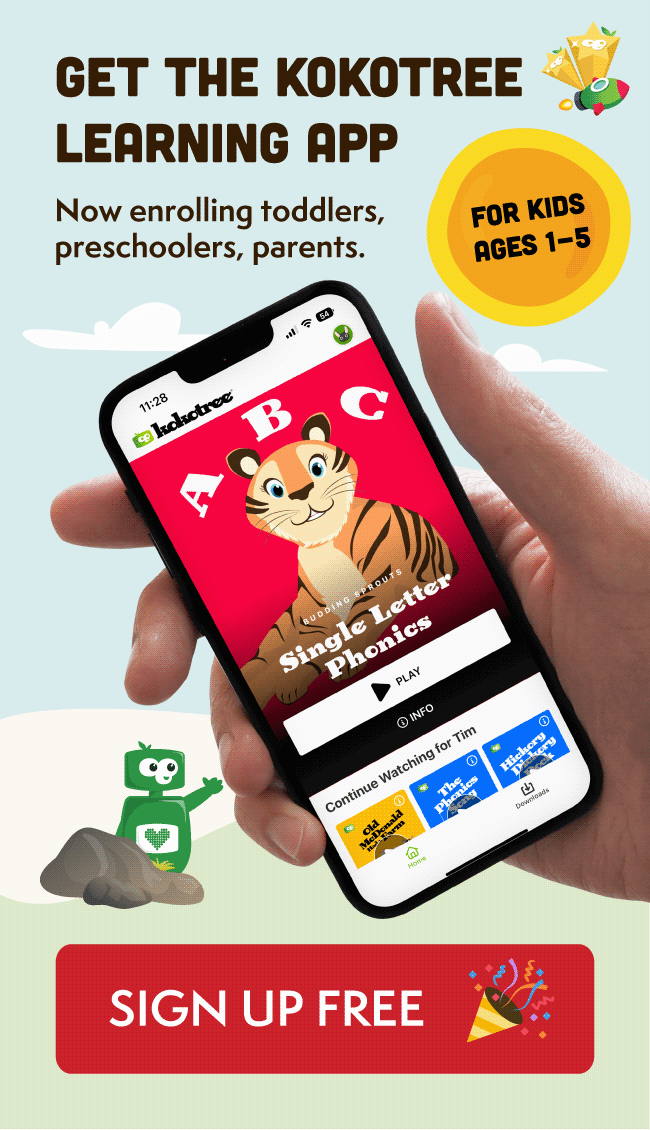

Welcome to our blog post about puppet shows and storytelling for toddlers! As a parent, finding ways to inspire your little one’s imagination and creativity is always a top priority. Thankfully, puppet shows and storytelling provide an engaging solution that can help you do just that. In this post, we’ll cover the exciting benefits these activities can offer, such as fostering language development and social skills, all while having fun together. Let’s dive into the world of puppetry and tales, and explore how to create a magical experience for your toddler!
Puppet shows and storytelling engage toddlers’ imagination and creativity through entertaining, interactive experiences. These activities promote language development by introducing new vocabulary and sentence structures while encouraging toddlers to communicate their thoughts and ideas. They also support social skills by teaching empathy, turn-taking, and active listening. Engaging in puppet shows and storytelling is a fun and educational activity that parents can easily introduce to their toddler’s daily routine.
Before diving into the world of puppetry and storytelling, let’s first explore the amazing benefits these activities can provide in early childhood education. By integrating these methods into your toddler’s daily routine, you can support their cognitive, language, and social development all while having fun together.
Puppet shows and storytelling captivate a child’s imagination as they act out roles, scenarios, and stories. These playful activities inspire creativity and let your toddler explore new possibilities, whether it’s through listening to your storytelling or taking an active role in the puppet show. Additionally, this fosters creative thinking, problem-solving, and imaginative play.
As toddlers listen to stories or engage in puppet shows, they’re exposed to a rich language environment that helps them learn new words and gain an understanding of sentence structure. Participating in these activities allows your toddler to expand their vocabulary, enhance their listening comprehension, and practice their speech and articulation.
Through puppet shows and storytelling, toddlers learn essential social skills such as empathy, turn-taking, and active listening. These experiences help your child understand different perspectives and emotions, positively impacting their overall social-emotional development. Furthermore, they learn to cooperate and share with others, preparing them for future social interactions.
Creating a welcoming and interactive environment for your puppet shows and storytelling sessions is key to making these experiences even more enjoyable for your toddler. Consider these tips for setting the stage:
Find a cozy spot in your home where your toddler can sit comfortably during the puppet show or storytelling session. Soft rugs or cushions can make the space more inviting, and ensure your little one remains engaged and focused.
Enhance the storytelling experience with props that can represent different characters or objects from the story. This will help your toddler visualize the tale and encourage their creativity. For puppet shows, simple hand puppets, finger puppets, or even DIY puppets made from household items will do the trick.
Having a designated area for puppet shows or storytelling can help set the scene for your child. A simple stage can be made from a cardboard box or even by hanging a curtain. If creating a storytelling corner, use themed decorations, storybooks, or other visual aids to get your toddler excited.

Get free parenting tips, news, updates, and content from Kokotree.
Now that you have the stage set, it’s time to explore techniques for making storytelling and puppet shows even more engaging for your toddler. Here are some helpful tips to captivate your little one’s attention and imagination:
Use an expressive tone and animated facial expressions to make the story or puppet show come alive. Allow for opportunities for your toddler to join in, whether it’s by asking them questions, inviting them to mimic character voices, or having them take part in retelling the story.
Select stories that are easy for your toddler to understand, with relatable themes and simple language. Classic fairy tales, nursery rhymes, or stories featuring animals or familiar objects are great options. Also, consider using a learning app for toddlers to find a variety of age-appropriate stories and interactive story-based games.
When storytelling or performing a puppet show, showcase various emotions and expressions to teach your toddler how to relate to the feelings of others. This helps develop empathy and improve their understanding of social-emotional cues.
To ensure your toddler benefits from these activities, it’s essential to integrate puppet shows and storytelling into their daily routine. Here are some creative ways to incorporate these experiences:
Make storytelling a part of your toddler’s bedtime routine. This not only provides a calm and relaxed environment for sharing a tale but also strengthens the bond between you and your child.
Choose a theme for the week or month, and base your stories or puppet shows around that theme. This can help reinforce the learning experience and encourage your toddler to make connections with the stories and characters they encounter.
Use puppet shows as an occasional reward for positive behavior or reaching a milestone. This not only makes the puppet show experience more exciting but also motivates your child to strive for good behavior and achievement.
In today’s digital age, there are numerous resources available online to enhance your toddler’s storytelling and puppet show experiences. Here’s how to take advantage of these tools:
Explore apps and websites designed for early childhood education that offer various digital stories, interactive storytelling games, and puppet show simulations. These tools provide an engaging way for your little one to practice their listening and comprehension skills while participating in a fun, interactive environment.
Family-friendly YouTube channels and other online platforms offer a wealth of puppet shows and storytelling sessions. By subscribing to these channels, you grant your toddler access to new and creative content, keeping them entertained and inspired!
Consider signing up for virtual storytelling or puppet show workshops. This enables you and your child to learn new techniques, participate in interactive storytelling sessions, and connect with other families who share your passion for early childhood education.
By introducing puppet shows and storytelling into your toddler’s daily routine, you’re creating a world of opportunity for their imagination, creativity, language development, and social skills. With these tips and resources, you’re well on your way to fostering a lifelong love for stories and creative play in your child’s life. The joy and memories shared will surely make these experiences priceless!
When engaging in puppet shows and storytelling as part of your toddler’s education, incorporating varied approaches and exploring new ideas can make these activities even more beneficial and memorable. Now let’s examine some additional ways to enhance your child’s experience, ensuring they get the most out of these creative play sessions.
Getting other caregivers, family members, or your toddler’s friends involved in the puppet shows and storytelling activities can make them even more entertaining for your child. Doing so also provides varied perspectives, different storytelling styles, and more opportunities for collaborative play, all while improving their social skills.
Incorporating background music, songs, or sound effects can enrich and enliven your storytelling sessions and puppet shows. This not only adds an additional layer of engagement for your toddler but also helps them develop their listening skills and appreciation for music.
Another effective way to boost toddler education through puppet shows and storytelling is by encouraging your child to draw or create artwork based on the characters and events in the story. This creative approach helps solidify their comprehension of the stories and reinforces their memory while developing their fine motor skills and artistic abilities.
As your toddler engages in puppet shows and storytelling activities, it’s important to monitor their progress and enjoyment. This helps ensure that they continue to grow, learn, and have fun at the same time. Consider these tips for tracking and enhancing their development:
Take note of your child’s reactions and involvement during the puppet shows and storytelling sessions. This will give you insights into their preferences, interests, and areas for potential improvement. Reflecting on these observations can guide you in customizing the activities to better suit their needs and keep them engaged.
Encourage open communication by asking your toddler about their feelings, likes, and dislikes concerning the puppet shows and stories. This information can help you adapt the activities and ensure they continue to enjoy and benefit from the experiences.
As your toddler grows and improves their language and social skills, introduce stories and puppet show themes of varying degrees of difficulty. This gradual increase in challenge keeps them motivated and provides new opportunities for continued learning and development.
By exploring these additional methods, collaborating with others, and monitoring your child’s progress, you can create an even more impactful puppet show and storytelling experience for your toddler. These invaluable activities will not only provide a strong foundation for your child’s education but will also nurture their overall development and bring joy to your time spent together.
In this section, we have compiled a list of frequently asked questions and answers about puppet shows and storytelling for toddlers. This information will help you better understand and implement these activities to enhance your child’s learning and development experiences.
You can start introducing puppet shows and storytelling to your child as early as their first year of life. At this age, focus on simple stories with appealing visuals and sounds. As your toddler grows, gradually increase the complexity and length of the stories to match their development.
Try to incorporate puppet shows and storytelling into your toddler’s daily routine. Consistency is crucial for fostering their love for stories and enhancing their language, social, and cognitive development.
Choose stories with simple language and relatable themes for toddlers. Classic fairy tales, nursery rhymes, or stories featuring animals or familiar objects work well. As your child grows, you can gradually introduce stories with more complex plots and themes.
Yes, you can make DIY puppets from household items like socks, fabric scraps, or paper. This not only saves money but also allows you and your child to personalize the puppets, making the experience even more enjoyable.
Use an expressive tone, animated facial expressions, and props to make the story or puppet show come to life. Also, encourage your toddler’s active participation by asking them questions, inviting them to mimic character voices, or involving them in the storytelling process.
Observe your child’s reactions and involvement during the activities. If they are engaged, ask questions, or exhibit excitement, it’s a sign they are enjoying the experience. If your toddler seems disinterested or restless, you may need to adjust your approach or select different stories and themes.
Yes, there are numerous digital resources available, including learning apps for toddlers, online puppetry and storytelling channels, and interactive websites. These tools provide an engaging way for your child to practice their listening and comprehension skills and enjoy varied content.
No, while puppet shows and storytelling are excellent for language development, they also aid in fostering creativity, imagination, social skills, and emotional intelligence, contributing to a comprehensive developmental experience for your toddler.
No, you can create a fun and engaging puppet show using simple hand puppets, finger puppets, or even DIY puppets made from household items. Creativity and expressiveness are more important than expensive materials when it comes to a successful puppet show.
While it’s not mandatory to have a designated physical space, having a comfortable and engaging area can make the puppet shows and storytelling sessions more enjoyable and immersive for your child.
Yes, involving other family members, friends, or caregivers in the puppet shows and storytelling can provide your toddler with a more engaging, fun, and varied experience, while also helping them develop their social skills.
Observing your child’s enjoyment and engagement, along with their language development and social skills, can help you gauge your success. Additionally, don’t be afraid to ask your child for feedback and adjust your approach to best suit their needs and preferences.
Absolutely! Books or printed materials can be an excellent source of inspiration and visual aid. They can provide new ideas for your storytelling sessions and reinforce the importance of reading and narrative comprehension for your toddler.




